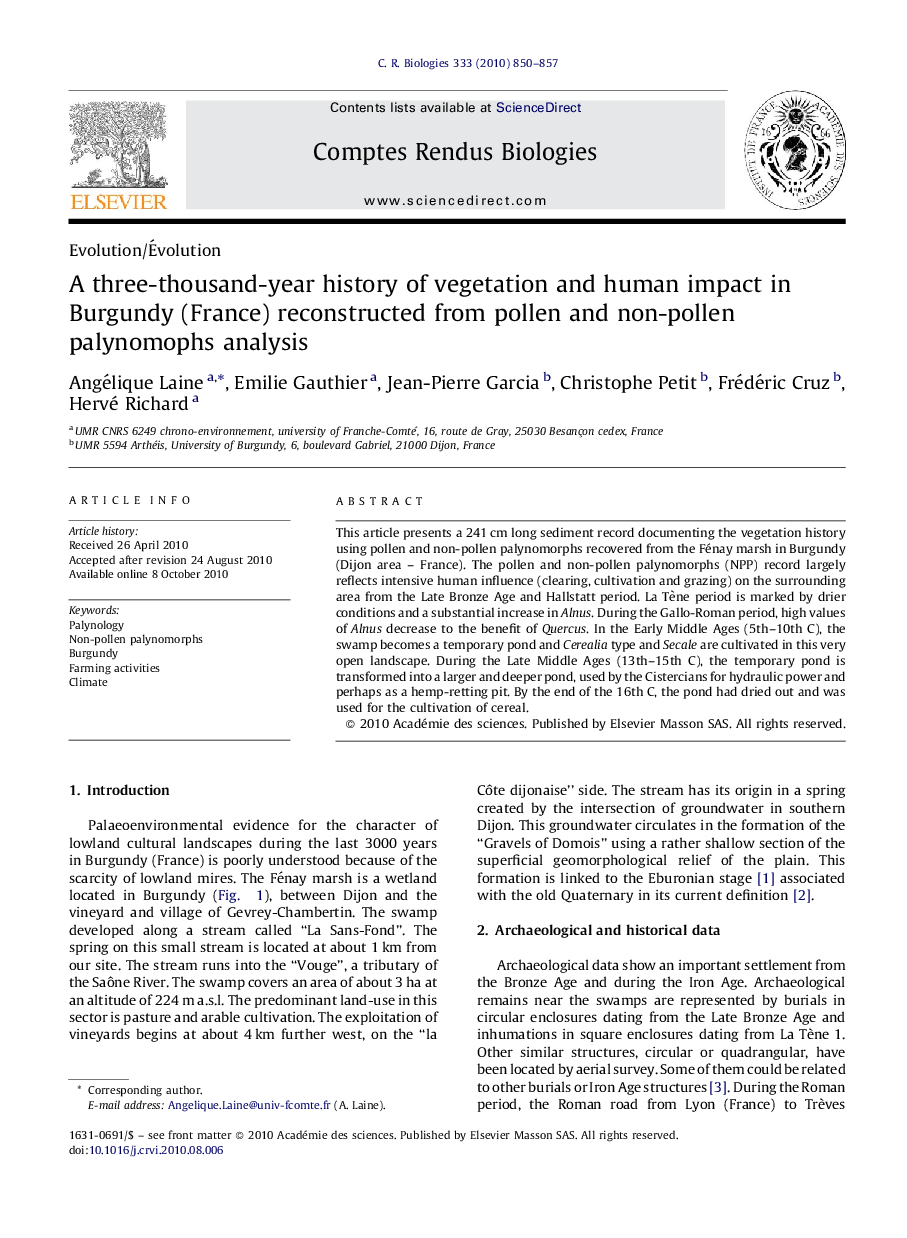| کد مقاله | کد نشریه | سال انتشار | مقاله انگلیسی | نسخه تمام متن |
|---|---|---|---|---|
| 2783846 | 1568217 | 2010 | 8 صفحه PDF | دانلود رایگان |

This article presents a 241 cm long sediment record documenting the vegetation history using pollen and non-pollen palynomorphs recovered from the Fénay marsh in Burgundy (Dijon area – France). The pollen and non-pollen palynomorphs (NPP) record largely reflects intensive human influence (clearing, cultivation and grazing) on the surrounding area from the Late Bronze Age and Hallstatt period. La Tène period is marked by drier conditions and a substantial increase in Alnus. During the Gallo-Roman period, high values of Alnus decrease to the benefit of Quercus. In the Early Middle Ages (5th–10th C), the swamp becomes a temporary pond and Cerealia type and Secale are cultivated in this very open landscape. During the Late Middle Ages (13th–15th C), the temporary pond is transformed into a larger and deeper pond, used by the Cistercians for hydraulic power and perhaps as a hemp-retting pit. By the end of the 16th C, the pond had dried out and was used for the cultivation of cereal.
Journal: Comptes Rendus Biologies - Volume 333, Issues 11–12, November–December 2010, Pages 850–857